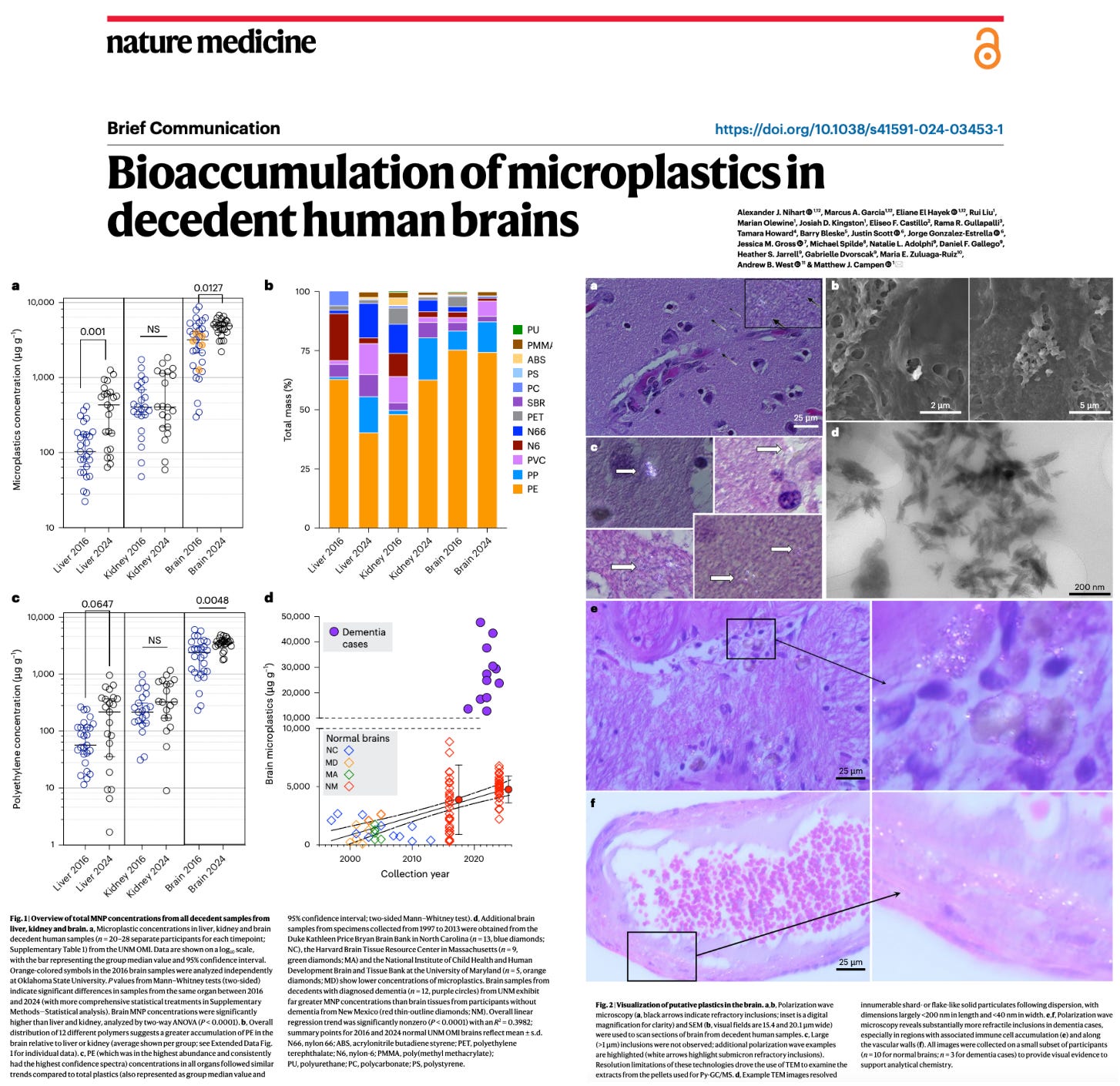NEW STUDY - Bioaccumulation of Microplastics in Decedent Human Brains
Increasing Brain Accumulation Over Time, with Fivefold Higher Levels in Dementia Patients
by Nicolas Hulscher, MPH
The study titled Bioaccumulation of microplastics in decedent human brains was just published in Nature Medicine:
Abstract
Rising global concentrations of environmental microplastics and nanoplastics (MNPs) drive concerns for human exposure and health outcomes. Complementary methods for the robust detection of tissue MNPs, including pyrolysis gas chromatography–mass spectrometry, attenuated total reflectance–Fourier transform infrared spectroscopy and electron microscopy with energy-dispersive spectroscopy, confirm the presence of MNPs in human kidney, liver and brain. MNPs in these organs primarily consist of polyethylene, with lesser but significant concentrations of other polymers. Brain tissues harbor higher proportions of polyethylene compared to the composition of the plastics in liver or kidney, and electron microscopy verified the nature of the isolated brain MNPs, which present largely as nanoscale shard-like fragments. Plastic concentrations in these decedent tissues were not influenced by age, sex, race/ethnicity or cause of death; the time of death (2016 versus 2024) was a significant factor, with increasing MNP concentrations over time in both liver and brain samples (P = 0.01). Finally, even greater accumulation of MNPs was observed in a cohort of decedent brains with documented dementia diagnosis, with notable deposition in cerebrovascular walls and immune cells. These results highlight a critical need to better understand the routes of exposure, uptake and clearance pathways and potential health consequences of plastics in human tissues, particularly in the brain.
Here are the key findings:
Significant Microplastic Accumulation in the Brain:
Brain tissues contained higher MNP levels than liver and kidney samples.
Median brain MNP concentration increased from 3,345 µg/g in 2016 to 4,917 µg/g in 2024.
This rise correlated with increasing environmental MNP pollution over time.
Dominant Plastic Types:
Polyethylene (PE) was the most abundant plastic in all organs but had the highest proportion in the brain (75%).
Other plastics detected: Polypropylene (PP), Polyvinyl Chloride (PVC), Styrene-Butadiene Rubber (SBR).
Dementia & Microplastic Accumulation:
Dementia cases exhibited over five times higher MNP concentrations than normal brain samples.
Notable plastic deposits were found in cerebrovascular walls and immune cells, suggesting possible neuroinflammatory effects.
Keep reading with a 7-day free trial
Subscribe to FOCAL POINTS (Courageous Discourse) to keep reading this post and get 7 days of free access to the full post archives.



